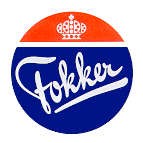
Fokker, was a Dutch aircraft manufacturer that operated from 1912 to 1996. The company was founded by the Dutch aviator Anthony Fokker and became famous during World War I for its fighter aircraft. During its most successful period in the 1920s and 1930s, Fokker dominated the civil aviation market. The company's fortunes declined over the course of the late 20th century. It declared bankruptcy in 1996, and its operations were sold to competitors.
C5, C05, C V or C-5 may refer to:

The Fokker D.VII was a German World War I fighter aircraft designed by Reinhold Platz of the Fokker-Flugzeugwerke. Germany produced around 3,300 D.VII aircraft in the second half of 1918. In service with the Luftstreitkräfte, the D.VII quickly proved itself to be a formidable aircraft. The Armistice ending the war specifically required, as the fourth clause of the "Clauses Relating to the Western Front", that Germany was required to surrender all D.VIIs to the Allies. Surviving aircraft saw much service with many countries in the years after World War I.
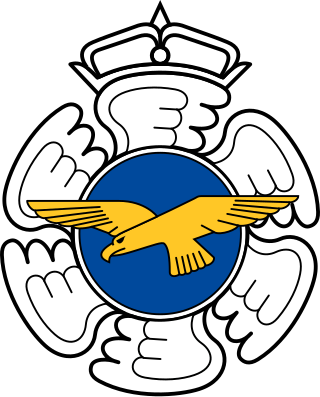
The Finnish Air Force is one of the branches of the Finnish Defence Forces. Its peacetime tasks are airspace surveillance, identification flights, and production of readiness formations for wartime conditions. The Finnish Air Force was founded on 6 March 1918.

The Heinkel He 115 was an all-metal twin-engined military seaplane designed and produced by the German aircraft manufacturer Heinkel. Early on its flying history, the He 115 established several new international records for floatplanes.
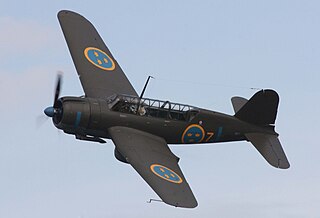
The Saab 17 is a Swedish single-engine monoplane reconnaissance dive-bomber aircraft of the 1940s originally developed by ASJA prior to its merger into Saab. It was the first all-metal stressed skin aircraft developed in Sweden.

The Fokker G.I was a Dutch twin-engined heavy fighter aircraft comparable in size and role to the German Messerschmitt Bf 110. Although in production prior to World War II, its combat introduction came at a time the Netherlands were overrun by the Germans. The few G.Is that were mustered into service were able to score several victories. Some were captured intact after the Germans had occupied the Netherlands. The remainder of the production run was taken over by the Luftwaffe for use as trainers.

The Fokker D.XXI fighter was designed in 1935 by Dutch aircraft manufacturer Fokker in response to requirements laid out by the Royal Netherlands East Indies Army Air Force.
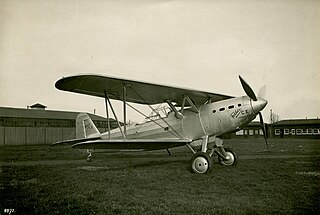
The Fokker C.X was a Dutch biplane scout and light bomber designed in 1933. It had a crew of two.

The Fokker F.VII, also known as the Fokker Trimotor, was an airliner produced in the 1920s by the Dutch aircraft manufacturer Fokker, Fokker's American subsidiary Atlantic Aircraft Corporation, and several other companies under license. It was an airliner that could carry 6-12 people, depending on the version, and it used a variety of engines; early versions had one engine but three was more common.

The Fokker F.VIII was a large twin-engined airliner designed and produced by the Dutch aircraft manufacturer Fokker in the 1920s.

The LVG C.VI was a German two-seat reconnaissance and artillery spotting aircraft used during World War I.
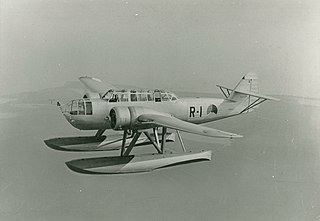
The Fokker T.VIII is a twin-engined torpedo bomber and aerial reconnaissance floatplane designed and manufactured by the Dutch aviation company Fokker.
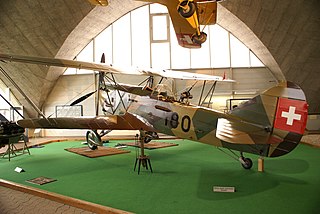
The EKW C-35 was a 1930s Swiss two-seat reconnaissance biplane aircraft built by the Swiss Federal Construction Works, Thun.

The DFW C.IV, DFW C.V, DFW C.VI, and DFW F37 were a family of German reconnaissance aircraft first used in 1916 in World War I. They were conventionally configured biplanes with unequal-span unstaggered wings and seating for the pilot and observer in tandem, open cockpits. Like the DFW C.II before them, these aircraft seated the gunner to the rear and armed him with a machine gun on a ring mount. Compared to preceding B- and C-class designs by DFW, however, the aerodynamics of the fuselage were more refined, and when coupled with more powerful engines, resulted in a machine with excellent performance.
The aerial warfare in the Winter War was the aerial aspect of the Winter War between Finland and the Soviet Union from 30 November 1939 to 13 March 1940. While the Soviet air forces greatly outnumbered the Finnish Air Force, the Soviet bombing campaign was largely ineffective, and Finnish pilots and antiaircraft gunners inflicted significant losses on the Soviets.

The Weiss WM-21 Sólyom was a 1930s Hungarian light bomber and reconnaissance biplane which served in World War II and was developed by the Manfred Weiss company.

Officine Ferroviarie Meridionali or OFM was an Italian railway and rolling stock manufacturing company based at Naples.

The Weiss WM-16Budapest was a reconnaissance/bomber aircraft developed by the Manfréd Weiss company in 1933.























